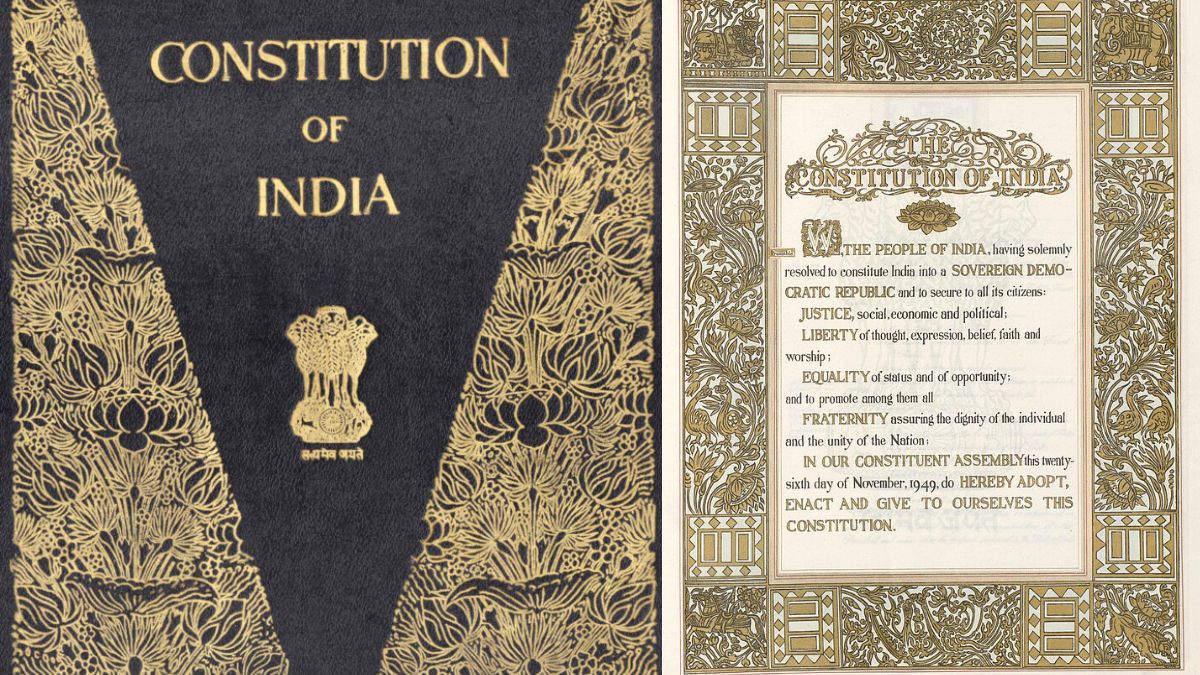Today (November 26) marks 75 years of India’s Constitution. It was on this day in 1949 that the Constituent Assembly adopted the Constitution. On January 26, 1950, it came into effect.
President Droupadi Murmu will helm the celebrations commemorating 75 years of India’s Constitution at the Central Hall of the old Parliament building today. Vice President Jagdeep Dhankhar, Prime Minister Narendra Modi and Lok Sabha Speaker Om Birla will also attend the special event.
Let’s take a closer look.
Journey to India’s Constitution: From Purna Swaraj to the Constituent Assembly
The history of India’s Constitution can be traced back to the British rule. While India gained Independence from the Britishers on August 15, 1947, the date was not the first choice to mark the country’s freedom.
In December 1929, the Indian National Congress declared Purna Swaraj, or complete independence, at its Lahore session. The party urged Indians to mark January 26 as the Independence Day.
This date was celebrated every year until India achieved its freedom on August 15, 1947.
But before India got its Independence, Congress demanded the creation of a Constituent Assembly on 15 November 1939. The British only heeded this call of India framing its own Constitution in 1942.
The Assembly finally came to be in 1946, with 296 representatives from the British India. It did not comprise princely states that wanted to create their own independent states or Mohammad Ali Jinnah, who went on to become Pakistan’s founder.
During the first session of the Constituent Assembly on December 11, 1946, Dr Rajendra Prasad was unanimously elected as its President.
Dr Bhim Rao (BR) Ambedkar was tasked with leading the drafting committee, days after India’s independence in August 1947. He once said, “Our difficulty is not about the ultimate future. Our difficulty is how to make the heterogeneous mass that we have today take a decision in common and march in a co-operative way on that road which is bound to lead us to unity. Our difficulty is not with regard to the ultimate. Our difficulty is with regard to the beginning.”
It took nearly three years for the 299-member Constituent Assembly to draft India’s most important document that lays down the law of the land – the Constitution.
World’s longest Constitution
India’s Constitution is the world’s largest. It is the longest such written document with 145,000 words, more than any other sovereign state.
In comparison, the United States’ Constitution is just 4,400 words long.
When the Indian Constitution came into effect on January 26, 1950, it contained 395 articles in 22 parts and eight schedules. Since then, the number of articles has risen to 448 due to over 100 amendments.
Sumant Batra, a corporate and policy lawyer, wrote for the Ministry of External Affairs (MEA), that the Constitution is a “dynamic instrument that can evolve with time either by its interpretation or amendment. On paper, an amendment to the Constitution is a difficult affair, and normally needs, at least, two-thirds of the Lok Sabha and Rajya Sabha to pass it. However, the Constitution of India is one of the most frequently amended constitutions in the world so as not to stand in the way of the growth and development of the nation and her people.”
The Constitution defines and separates the powers and responsibilities of the executive, legislature and judiciary. It outlines the rights as well as duties of the citizens.
The original text has two handwritten copies – one in Hindi and another in English. These are currently preserved in helium-filled cases in the library of the Parliament House.
Celebrating 75 years of India’s Constitution
In 2015, the Centre announced that November 26 would be observed as Constitution Day, or Samvidhan Divas. Since then, it has been an annual celebration.
This year, the government plans to hold a year-long festivity to mark 75 years of the Constitution. Being organised under “Hamara Samvidhan, Hamara Swabhimaan” slogan, the Centre will “honour” the makers of the Constitution while “reiterating the core values enshrined in it”.
The Ministry of Culture said in a statement that a dedicated website – constitution75.com – has been set up to facilitate the engagement of citizens with the “Constitution’s legacy through interactive activities and resources”, such as making the full document available in multiple languages; and enabling people to record their videos reading the Preamble of the Constitution and upload it on the website to get a certificate.
Mass readings of the Preamble will also be organised at schools, offices, etc.
The government will also launch a commemorative coin and stamp to mark the occasion.
With inputs from agencies


)

)
)
)
)
)
)
)
)



